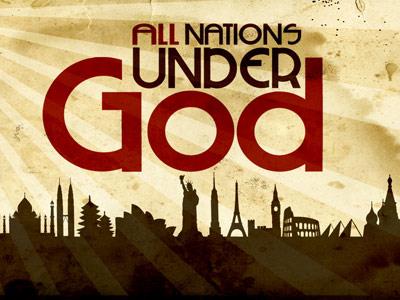-
Revelation (Part 9) Series
Contributed by Scott Bayles on Feb 29, 2024 (message contributor)
Summary: In Revelation 14, we unlock the mystery of the Prostitute, the Punishment, and the Praise.
(Part 9)
Scott Bayles, pastor
Blooming Grove Christian Church: 11/26/2017
If you’re just joining us, we are nearing the end of this ten-week excursion into the blessed yet baffling book of Revelation. Before we can enjoy the final chapters, however, there remains one last mystery to solve.
Last week, in Revelation 13, a scarlet, seven-headed beast exploded out of the sea and into John’s vision. This hideous and horrifying beast looked like a leopard, but had the feet of a bear and the mouth of lion. The beast wages war on Christians for forty-two months and demands to be worshipped as god. Both the monstrous imagery and the malicious intent of the beast, help us uncover the mysterious identity of the beast, who is none other than the Roman Empire and its reigning emperor, Nero Caesar.
But in chapter 17, John sees a woman riding on this terrible beast. She’s often called, the Whore of Babylon. “What has puzzled me over the years is not the identity of ‘the great prostitute,’ but how so many could mistake her historical identity. On the one hand, hundreds of prophecy experts misidentify the great prostitute as the contemporary Roman Catholic Church. On the other, hundreds of commentators identify the great harlot as ancient (or revived) imperial Rome… either way, this is a clear case of mistaken identity.”
If you have a Bible or an app on your phone, open it to Revelation 17. We’ll be looking at Revelation 17, 18 and 19, but let’s start with chapter 17, which focuses on the prostitute.
• THE PROSTITUTE
As chapter 17 begins, an angel calls to John saying, “Come, I will show you the punishment of the great prostitute” (Revelation 17:1 NIV). So, John accompanies the angel on a spiritual journey into the wilderness, where he writes:
I saw a woman sitting on a scarlet beast that was covered with blasphemous names and had seven heads and ten horns. The woman was dressed in purple and scarlet, and was glittering with gold, precious stones and pearls. She held a golden cup in her hand, filled with abominable things and the filth of her adulteries. The name written on her forehead was a mystery: Babylon the Great, the Mother of Prostitutes and of the Abominations of the Earth. I saw that the woman was drunk with the blood of God’s holy people, the blood of those who bore testimony to Jesus. When I saw her, I was greatly astonished. (Revelation 17:3-6 NIV)
As I already alluded to, all sorts of sensational suggestions have been made concerning the identity of the great prostitute, but—as always—Revelation itself provides us with several clues to help piece together this puzzle.
The first clue is handed to us on a silver platter when an angel explains to John, “The woman you saw is the great city that rules over the kings of the earth” (Revelation 17:18). So, we know that the great prostitute represents a great city. But which great city?
Contemporary conjectures include New York, Brussels, and the Vatican. More sensible scholars point to Rome, the capital city of the empire. However, I’m convinced that the great prostitute is none other than Jerusalem.
First, the city is called “the great city” multiple times. The first time the phrase “the great city” is used in Revelation is clearly a reference to Jerusalem. Back in chapter 11, John is told to measure the Temple in the holy city. That same city is then called “the great city—which is figuratively called Sodom and Egypt—where also their Lord was crucified” (Revelation 11:8 NIV). So the great city is the holy city, where the Temple resided, and where Jesus was crucified. No city beside Jerusalem matches that description. This same verse also sets a precedent for referring to Jerusalem figuratively. Just like Babylon, Sodom and Egypt were infamously wicked pagan places, hostile to God. If Jerusalem is figuratively called Sodom and Egypt in chapter 11, then it’s quite consistent to call it Babylon in chapter 17.
Furthermore, the clothing worn by the great prostitute reflects the clothing worn by the Jewish priests. John says, “The woman was dressed in purple and scarlet, and was glittering with gold” (Revelation 17:4 NIV). This imagery comes from the Ephod worn by the high priest. God gave instructions: “Make the ephod of gold, and of blue, purple and scarlet yarn, and of finely twisted linen—the work of skilled hands” (Exodus 28:5-6 NIV). In fact, not only does the high priest dress in purple, scarlet and gold, but the Temple itself was decorated in purple, scarlet and gold. All of the fixtures inside the Temple were made of gold and the tapestries were purple and scarlet. The Jewish historian Joseph describes the curtain separating the “Holy Place” from the “Most Holy Place” this way: “It was a Babylonian curtain, embroidered with blue, and fine linen, and scarlet, and purple, and of a texture that was truly wonderful” (The Jewish Wars V.5.4).

 Sermon Central
Sermon Central



